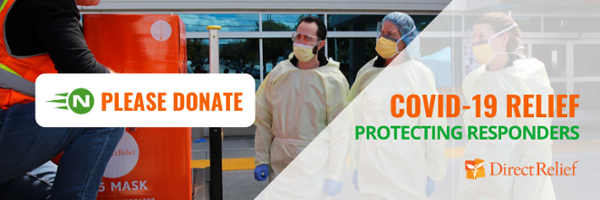 We’ve written quite a bit in the past about best practices for supply chain labor management and with the extreme stress being put on the every part of some supply chains right now, though it would be a good time to share some additional insights on how to maintain a healthy and productive work force.
We’ve written quite a bit in the past about best practices for supply chain labor management and with the extreme stress being put on the every part of some supply chains right now, though it would be a good time to share some additional insights on how to maintain a healthy and productive work force.
A recent white paper from Canon that we’ll dig into on a later date (along with some other useful sources) boils it down to three core goals, which will seem fairly familiar:
- Find the Right People
- Train Them Well
- Keep Them Happy
This is probably good advice for any employer in any industry, but today we’re going to look at some specifics that now apply to your warehouse and other supply chain component areas that are NOT covered in the standard lists of labor management “best practices” but can be expected to be somewhat standard soon. One definite difference from all of your previous thinking that you’ll need to embrace is that the definition of “Safety” has now changed, probably for good, and will likely have a major impact on keeping your team happy.
The New Reality: Safety is #1
You have often heard (or for some folks, “often said”) that “Perception Is Reality”. The new reality now is that “Safety in the Workplace” is no longer limited to the physical world of slipping, falling, machine accidents other typical incidents that result in immediate physical harm. ALL of these concerns still apply, but now all take a backseat to sanitation and clean working best practices. If your workers are going to have anxiety every morning before coming in about the potential to get extremely sick – or worse – from their workplace, how productive will they be, and how long will they continue coming to work? Here is an incomplete list of things that need to be addressed if employers are going to fully adapt the workplace to reduce or eliminate that anxiety:
- Lack of sick pay – which encourages those who are sick to come to work, inducing anxiety in others including your customers.
- Lack of PPE – where relevant, are facemasks, goggles, gloves and sanitizers readily available? If staff are in an environment where they are recommended now, then they will want to see that continue well beyond the “all clear” sign that comes from your local government, correct or otherwise.
- Lack of cleaning and disinfecting protocols – How have you changed the way you maintain your facility? Do you have a standard checklist of protocols by job type? Or is there someone or some group visibly responsible for designing, implementing and enforcing these new protocols? Telling everyone to “go back to normal” with a recommendation to wash your hands more often probably won’t do.
- Lack of interest – perhaps the worst message an employer can send is to pretend none of this matters. It’s one thing to encourage everyone to bear down and work together to tough their way through things for now, but it just sounds flippant and borderline insensitive if you do so without acknowledging the reality of what is going on and what your people are feeling if they are considered “essential” yet not being heard.
The point is – MAKE changes that directly address how people feel, make them visible, and make management accountable for this new definition of “safety” that is now going to be front of mind for a large majority of workers for the remainder of the year – and perhaps beyond.
Take it One Step Further – With Your Suppliers
On top of all of that, if you are a business that relies on a series of partnerships in your supply chain, remember that they have staff too and your staff will be aware of some or all of their safety practices. If one or more of your suppliers is known for being sloppy and has had
Laying out what YOUR protocols are to your partners and making recommendations to them that make life easier for your team is never off-limits. No one would hesitate to direct them on which label to have on their cartons, the bar code format, and any number of things that are required to maintain accuracy and speed on the Receiving Dock, so why not have them also document for you what THEIR protocols are so you know what to expect? It might just lead to some solutions that prevent any additional time added to your Receiving or other intake processes.continuity issues due to illness and poor hygiene safety practices, how will that impact your team’s perception of their own safety when they are offloading a container in Receiving that is coming from your supplier? On one of the cruise ships that was quarantined at the outset of this crisis, doctors found live samples of the COVID-19 virus a full 17 days after the ship docked and all the passengers disembarked. That means that a container from overseas can have pallets that have the virus on them or their shrink wrap that could still be live after it arrives in the US and reaches our Receiving dock.
Concrete Steps For the New Definition of “Safety”
There are a number of things that will matter to your teams more than others depending on the job role, your industry and the general work environment. Here is a short list of concrete actions to consider taking to maintain the health of your staff and by extension, reduce the potential for anxiety and reduced productivity.

- Safety Committee - Put a “safety” committee in place that includes both management and floor staff. This demonstrates that the issue is being taken seriously AND that there is a voice for everyone in determining protocols.
- Make Your Facility a “Safe Zone” – as we’ve seen from other leading businesses already, keeping the workplace free of outside contamination creates a good foundation to build other protocols on. For example, scanning for temperature when a new shift clocks in, PPE provided at the start of a shift (where needed), setting up regular disinfection of equipment and workstations, requiring similar checks of visitors, drivers and other outsiders, etc.
- Create a Visible, Enforceable Checklist – Whatever protocols you decide on, make them public, put the time to ensure there is 100% awareness (and training when necessary) and make sure someone is accountable and responsible for ensuring they are followed.

Will this make everyone happy? Probably not, especially the skeptics who would prefer to think that there is nothing to be concerned about already. But it will go a long way to keep everyone focused on the things they were doing BEFORE the crisis and creating a more stable version of the “new normal” we are all hoping to get to as soon as possible.











